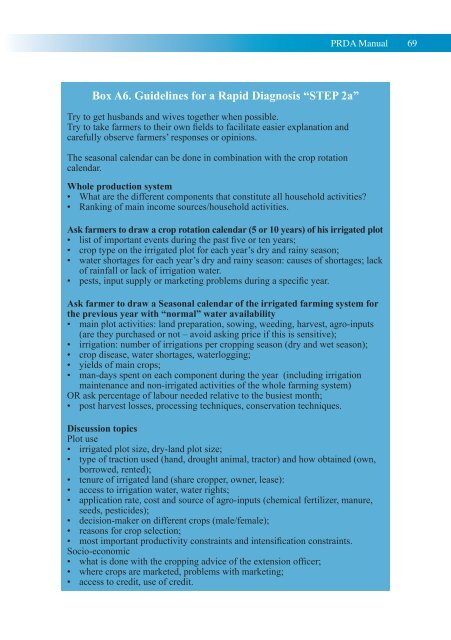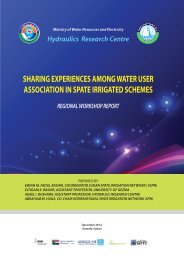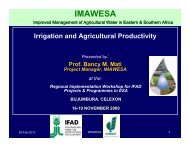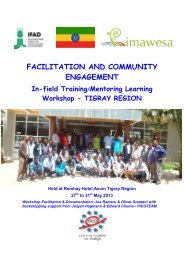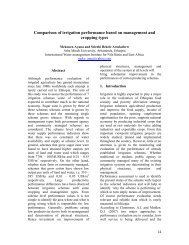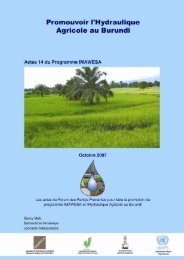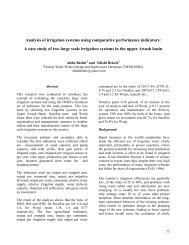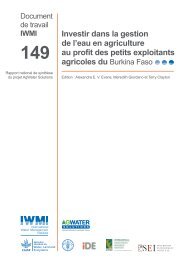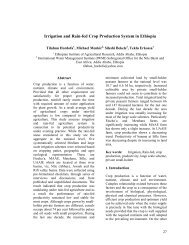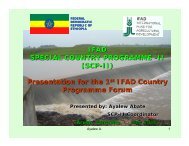Manual - Participatory rapid diagnosis and action ... - FAO.org
Manual - Participatory rapid diagnosis and action ... - FAO.org
Manual - Participatory rapid diagnosis and action ... - FAO.org
You also want an ePaper? Increase the reach of your titles
YUMPU automatically turns print PDFs into web optimized ePapers that Google loves.
PRDA <strong>Manual</strong> 69Box A6. Guidelines for a Rapid Diagnosis “STEP 2a”Try to get husb<strong>and</strong>s <strong>and</strong> wives together when possible.Try to take farmers to their own fields to facilitate easier explanation <strong>and</strong>carefully observe farmers’ responses or opinions.The seasonal calendar can be done in combination with the crop rotationcalendar.Whole production system• What are the different components that constitute all household activities?• Ranking of main income sources/household activities.Ask farmers to draw a crop rotation calendar (5 or 10 years) of his irrigated plot• list of important events during the past five or ten years;• crop type on the irrigated plot for each year’s dry <strong>and</strong> rainy season;• water shortages for each year’s dry <strong>and</strong> rainy season: causes of shortages; lackof rainfall or lack of irrigation water.• pests, input supply or marketing problems during a specific year.Ask farmer to draw a Seasonal calendar of the irrigated farming system forthe previous year with “normal” water availability• main plot activities: l<strong>and</strong> preparation, sowing, weeding, harvest, agro-inputs(are they purchased or not – avoid asking price if this is sensitive);• irrigation: number of irrigations per cropping season (dry <strong>and</strong> wet season);• crop disease, water shortages, waterlogging;• yields of main crops;• man-days spent on each component during the year (including irrigationmaintenance <strong>and</strong> non-irrigated activities of the whole farming system)OR ask percentage of labour needed relative to the busiest month;• post harvest losses, processing techniques, conservation techniques.Discussion topicsPlot use• irrigated plot size, dry-l<strong>and</strong> plot size;• type of tr<strong>action</strong> used (h<strong>and</strong>, drought animal, tractor) <strong>and</strong> how obtained (own,borrowed, rented);• tenure of irrigated l<strong>and</strong> (share cropper, owner, lease):• access to irrigation water, water rights;• application rate, cost <strong>and</strong> source of agro-inputs (chemical fertilizer, manure,seeds, pesticides);• decision-maker on different crops (male/female);• reasons for crop selection;• most important productivity constraints <strong>and</strong> intensification constraints.Socio-economic• what is done with the cropping advice of the extension officer;• where crops are marketed, problems with marketing;• access to credit, use of credit.


